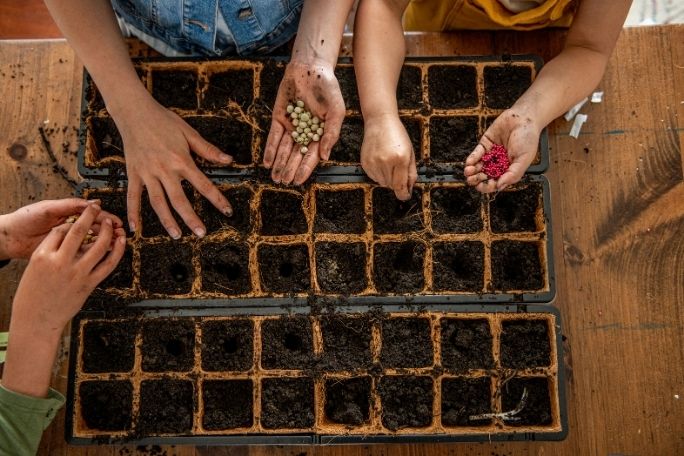Lesson summary
In this activity children explore some of the different types of seed that we eat. Children begin by looking at a range of dried seeds, comparing their size, colour, texture, and shape. Younger children then make maracas using some dried seeds and milk/juice bottle lids. Older children can make maracas or use the seeds in other craft projects, including making mosaics. This activity is designed to help connect children to the wonders of the natural world through sensory and play-based learning.
Activity Intention:
- This activity is designed to help connect children to the wonders of the natural world through sensory and play-based learning.
Lesson guides and printables
Lesson details
Curriculum mapping
Learning Outcome 2:
- Children are connected with and contribute to their world
- 2.4 Children become socially responsible and show respect for the environment
Learning Outcome 4:
- Children are confident and involved learners
- 4.1 Children develop dispositions for learning such as curiosity, cooperation, confidence, creativity, commitment, enthusiasm, persistence, imagination and reflexivity
- 4.2 Children develop a range of skills and processes such as problem solving, inquiry, experimentation, hypothesising, researching and investigating
- 4.4 Children resource their own learning through connecting with people, place, technologies and natural and processed materials
Learning Outcome 5:
- Children are effective communicators
- 5.1 Children interact verbally and non-verbally with others for a range of purposes
Resources required
Ages 0 – 2:
- Collect a range of dried seeds, such as rice (white, brown and/or black), wheat, barley, lentils, chickpeas, beans, poppy, sunflower, pumpkin (pepitas), sesame, chia, quinoa, corn. Place the different types of seeds in plastic tubs or clear plastic zip-lock bags and seal with sticky tape (by placing seeds into bags, children will be able to feel the seeds, however, if you think little fingers might be able to poke through the bags then place seeds into plastic tubs). If you find that your supermarket has a limited range of seeds, consider visiting a health food or produce store.
- To make seed maracas you will need:
- Dried seeds
- Two milk/juice bottle lids of the same size for each child
- Masking tape
- Ice cream sticks (optional)
- Seed maracas instructions (optional)
- Tape and marker pens to decorate (optional)
- Optional: Print the Nut Flashcards and stick the provocations to the back of each corresponding image.
Ages 3 to 5:
- Collect a range of dried seeds, such as rice (white, brown and/or black), wheat, barley, lentils, chickpeas, beans, poppy, sunflower, pumpkin (pepitas), sesame, chia, quinoa, corn. If required, place the different types of seeds in plastic tubs or clear plastic zip-lock bags and seal with sticky tape (by placing seeds into bags, children will be able to feel the seeds, however, if you think little fingers might be able to poke through the bags then place seeds into plastic tubs). If you find that your supermarket has a limited range of seeds, consider visiting a health food or produce store.
- Seed crafts:
- Maracas – Dried seeds, two milk/juice bottle lids of the same size for each child, masking tape, ice cream sticks (optional), Seed maracas instructions (optional), and tape and marker pens to decorate (optional).
- Mosaics or mandalas – Dried seeds, glue and paper (or use this template to stick seeds to).
- Optional: Print the Nut Flashcards and stick the provocations to the back of each corresponding image.
Additional info
This lesson has been created in partnership with ACT for Bees. ACT for Bees is a not-for-profit organisation taking action to preserve these essential pollinators, ensuring a food-secure future.


Welcome back!
Don't have an account yet?
Log in with:
By signing up to Cool.org you consent and agree to Cool's privacy policy to
store, manage and process your personal information. To read more, please see
our privacy policy here(Opens in new tab).
Create your free Cool.org account.
Many of our resources are free, with an option to upgrade to Cool+ for premium content.
Already have an account?
Sign up with:
By signing up to Cool.org you consent and agree to Cool's privacy policy to
store, manage and process your personal information. To read more, please see
our privacy policy here(Opens in new tab).